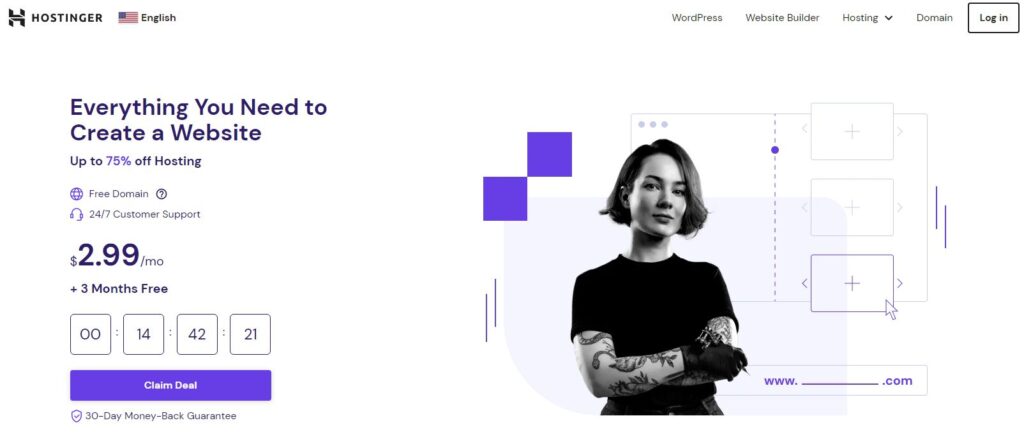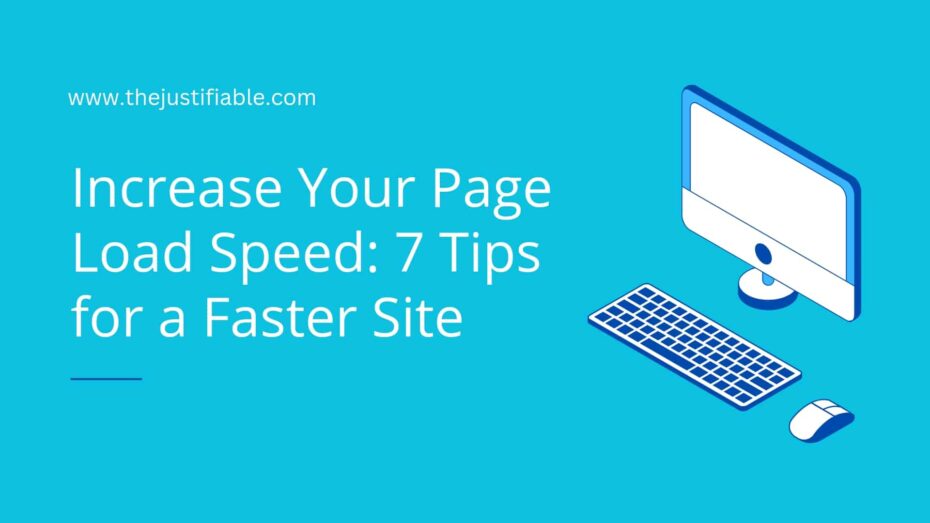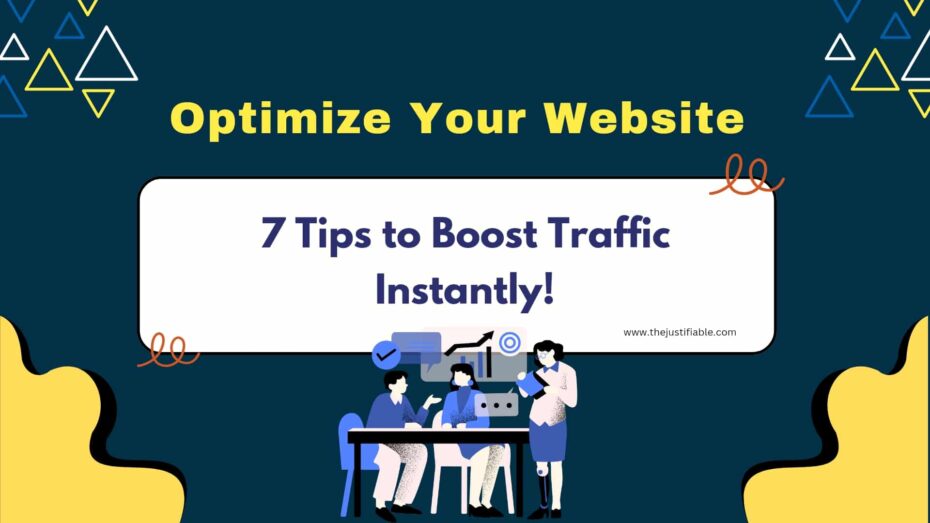Disclosure: This post contains affiliate links, which means that if you click on them and make a purchase, I will receive a commission. Read our Disclaimer for More.
Are you tired of waiting for your website to load? Wondering how page load speed can impact your visitor’s experience and your site’s SEO rankings? You’re not alone. Many website owners overlook the crucial role that load speed plays in the success of their online presence. In my experience, improving your page load speed can significantly enhance user satisfaction and boost your search engine rankings.
From my perspective, the first step to addressing this issue is understanding the current performance of your site. It’s essential to analyze your page load speed using reliable tools and identify the bottlenecks slowing down your site. My recommendation is to start with a comprehensive site audit that highlights areas for improvement. This will serve as your roadmap for enhancing your website’s performance.
I strongly believe that optimizing your website for faster load times is not just a technical challenge but a crucial element for providing a better user experience. Fast-loading pages keep visitors engaged, reduce bounce rates, and, most importantly, improve the overall perception of your brand. In the following sections, I’ll guide you through seven practical tips to turbocharge your page load speed. From compressing images to leveraging browser caching, I’ll share my insights on how to make your site lightning-fast. Let’s dive into the specifics and unlock the secrets to a faster, more efficient website.
1. Analyze Your Current Page Load Speed: Starting Point for Improvement
“Speed is the essence of war.” Although Sun Tzu was referring to the battlefield, this principle applies equally to the digital arena, particularly concerning page load speed. In my view, the first step to conquering the digital battlefield is knowing where you stand. Analyzing your current page load speed isn’t just about numbers; it’s about understanding how these figures translate into user experience and search engine rankings.
From my perspective, a detailed analysis helps pinpoint specific issues that may be dragging your site down. It could be anything from unoptimized images to cumbersome scripts that weren’t initially apparent. My suggestion here is to approach this analysis with an open mind. You might find that improvements can be made in areas you hadn’t considered, which could significantly enhance your site’s performance.
Recognizing the current state of your website’s speed is crucial for setting realistic improvement goals. It’s not just about achieving a faster load time; it’s about creating a better, more efficient experience for your visitors. From my point of view, this initial analysis is the foundation upon which successful optimization strategies are built. By understanding where you currently stand, you can strategize effectively to make impactful changes that resonate with both your audience and search engines.
Utilize the Best Tools to Measure Page Load Speed
“In the world of website optimization, the right tools are worth their weight in gold.” This saying holds especially true when it comes to measuring page load speed. From my perspective, utilizing the best tools available can make a significant difference in accurately assessing your site’s performance. Tools like Google PageSpeed Insights, GTmetrix, and WebPageTest offer in-depth insights that are invaluable for any webmaster looking to improve their site’s speed.
Each of these tools brings something unique to the table. Google PageSpeed Insights, for example, not only analyzes your site’s performance on both desktop and mobile but also provides specific recommendations for improvement. My recommendation is to use a combination of these tools to get a comprehensive view of your site’s speed. This approach ensures that you’re not missing out on any crucial data that could inform your optimization efforts.
Speaking personally, I’ve found that these tools are not just diagnostic instruments; they are guides that steer you in the right direction towards achieving optimal page load speed. By leveraging these resources, you can identify the most pressing issues affecting your site’s speed and prioritize them for improvement. Remember, in the quest for faster load times, knowledge is power. Equip yourself with the best tools, and you’ll be well on your way to a speedier site.
Understand Your Site’s Performance Metrics
“Knowing is half the battle,” as the old adage goes. This couldn’t be truer when it comes to optimizing your page load speed. Understanding your site’s performance metrics is crucial, as these numbers tell the story of your website’s current state and hint at the narrative of potential improvement. Metrics such as First Contentful Paint (FCP), Time to Interactive (TTI), and Largest Contentful Paint (LCP) are not just indicators; they are the language of website performance.
From my point of view, comprehending these metrics allows you to see beyond the surface-level speed of your site. It helps you understand the user experience from the moment they land on your page. For instance, a high Time to Interactive score could mean visitors are waiting too long to interact with your page, leading to frustration and potentially a higher bounce rate. My recommendation is to dive deep into these metrics to truly grasp the impact of your site’s speed on user experience.
In my experience, a thorough understanding of these metrics can transform how you approach website optimization. It’s not merely about achieving a faster load time but ensuring that your site is efficient, responsive, and user-friendly. This holistic approach to site performance is what separates the good sites from the great ones. By focusing on improving these key performance indicators, you’re not just speeding up your site; you’re enhancing the overall quality of your digital presence.
2. Optimize Your Images: Reduce Size, Boost Speed
Did you know that images account for about 21% of the total weight of a webpage? This statistic underscores the significant impact images have on your page load speed. In my experience, optimizing your images is one of the most effective ways to improve your website’s performance. It’s not just about reducing file sizes; it’s about maintaining visual quality while enhancing your site’s speed.
From my point of view, many websites are weighed down by unnecessarily large images that slow down page load times. By addressing this issue, you can make substantial improvements to your site’s speed without compromising on the visual appeal. My recommendation is to audit your site’s images and identify opportunities for optimization. This process might involve resizing images, compressing them, or changing their format.
I strongly believe that image optimization should be a priority for any website looking to improve its page load speed. Not only does it contribute to a faster site, but it also improves user experience by ensuring that your content loads efficiently, even on slower connections. From my perspective, this is a win-win situation. By optimizing your images, you’re not just speeding up your site; you’re also enhancing the overall quality of your visitor’s experience.
Compress Images Without Losing Quality
Compression is a game-changer when it comes to image optimization. I would say that effectively compressing your images can drastically reduce their file size while preserving their quality. This means your website can load faster without sacrificing the visual integrity of your images. There are several tools and techniques available for this purpose, such as using software like Adobe Photoshop or free online tools that can automate the compression process.
In my opinion, it’s important to find the right balance between compression and image quality. Too much compression can lead to pixelated or blurry images, negatively impacting the user’s perception of your site. My suggestion is to experiment with different compression levels to find the sweet spot that maintains image quality while significantly reducing file size.
From my perspective, the benefits of image compression extend beyond just improving page load speed. It also helps in reducing bandwidth usage, which can be particularly beneficial for users on limited data plans. Therefore, I recommend incorporating image compression into your regular website maintenance routine to keep your site’s images optimized and your page load speed swift.
Implement Responsive Images for Different Devices
In today’s mobile-first world, it’s essential to ensure that your images look great on all devices. This is where implementing responsive images comes into play. According to research, mobile devices account for approximately half of the web traffic worldwide. This underscores the importance of optimizing images not just for desktop but for mobile devices as well.
Responsive images adjust their size based on the screen size of the device they’re being viewed on. This optimization ensures that users have a seamless experience regardless of their device, without unnecessary data usage. My recommendation is to use HTML’s srcset attribute, which allows you to specify multiple image files for different screen sizes and resolutions.
I believe that implementing responsive images is a critical step in optimizing your website for both performance and user experience. It ensures that your images load quickly and look sharp on every device, enhancing your site’s accessibility and appeal. From my point of view, taking the time to set up responsive images is well worth the effort for the positive impact it has on your site’s performance and user satisfaction.
3. Leverage Browser Caching: Cut Load Times Significantly
Leveraging browser caching is akin to teaching your website to remember; just as a well-trained memory can recall information swiftly, a website with effectively utilized browser caching can retrieve and display content much faster. This optimization technique plays a pivotal role in enhancing page load speed by storing certain parts of your website locally in the visitor’s browser. The result? Subsequent page loads become significantly faster, as the browser doesn’t need to retrieve the same information from the server again.
From my perspective, the beauty of browser caching lies in its ability to provide immediate improvements in loading times for repeat visitors. By strategically caching elements such as images, CSS files, and JavaScript, you can drastically reduce the bandwidth needed for your site to load. This not only speeds up the experience for users but also reduces the load on your servers during peak times. My recommendation is to identify which resources on your site change infrequently and are prime candidates for caching.
Implementing browser caching is a straightforward process with a profound impact on performance. However, it’s essential to set appropriate expiration times for cached resources. Too short, and you’ll fail to reap the benefits of caching; too long, and users might not see updated content in a timely manner. From my point of view, achieving the right balance requires understanding your website’s update frequency and user behavior. Thoughtful implementation of browser caching can lead to a noticeably smoother and more efficient user experience.
How Browser Caching Works and Its Impact on Speed
Browser caching is a powerful tool that, when harnessed correctly, can feel almost magical in its ability to speed up web pages. Essentially, it allows a user’s browser to store copies of individual web pages, so that when a visitor returns to your site, the browser can load the page without having to send a request to the server. This process significantly reduces the load time, especially for websites that visitors frequent.
Understanding the mechanism behind browser caching reveals its potential impact on page load speed. When a browser requests a webpage, the server responds with the content along with rules on how long the browser should remember it. These rules are crucial for ensuring that users see the most current version of your site without unnecessary delays. In my view, effectively setting these rules is an art that balances performance with freshness of content.
From my perspective, the impact of browser caching on website speed cannot be overstated. It not only improves the user experience by making sites faster to load on subsequent visits but also decreases server load, which can be a significant benefit for sites with high traffic volumes. My recommendation is to prioritize the setup of browser caching as part of your website’s optimization strategy. It’s a relatively simple change that can lead to substantial improvements in performance.
Setting Up Effective Caching Policies
Setting up effective caching policies is like drawing the best blueprint for a treasure map; it guides the browser on what to cache and for how long, ensuring that users have the fastest possible access to your content. The key to effective caching lies in understanding the nature of your website’s content and how often it updates. Static elements, such as logos and CSS files, are ideal candidates for longer cache durations, while dynamic content might require a more nuanced approach.
From my point of view, one of the most important steps in setting up caching policies is to use the Cache-Control header wisely. This header allows you to specify the maximum age for cached resources, among other directives. My suggestion is to set aggressive caching policies for static resources and more conservative ones for content that changes frequently. This strategy ensures that users benefit from fast loading times while still receiving the most up-to-date content.
Testing and monitoring are crucial after implementing your caching policies. Tools like Google PageSpeed Insights can provide insights into how effectively your site utilizes browser caching. I strongly believe that by continuously evaluating the performance of your caching strategy and making necessary adjustments, you can ensure that your website offers an optimal balance between speed and content freshness. If you ask me, effective caching policies are not set-and-forget; they are an ongoing commitment to your website’s performance and user experience.
4. Minimize HTTP Requests: Streamline Your Site’s Efficiency
While it’s true that rich, interactive websites can enhance user engagement, there’s a trade-off: every piece of content, from scripts to images, requires an HTTP request, potentially slowing down your page load speed. Minimizing these requests is crucial for optimizing your website’s efficiency. In the digital realm, where speed is of the essence, reducing the number of HTTP requests can significantly impact your site’s performance.
From my perspective, the first step in minimizing HTTP requests is to conduct a thorough audit of your site. Tools like Google Chrome’s Developer Tools can help you identify which files are being requested and how much time each takes to load. My suggestion is to start by scrutinizing your site for any unnecessary images, scripts, or stylesheets. It’s often surprising how much can be trimmed without sacrificing the quality of the user experience.
In my experience, simplifying your design can also lead to a reduction in HTTP requests. This doesn’t mean your site has to look bland; rather, it’s about being strategic with your use of resources. Opt for CSS-based layouts over images where possible, and be judicious in your use of scripts and plugins. From my point of view, every small adjustment counts. By streamlining your site’s design and content, you can significantly improve its load time, making for a smoother and more enjoyable user experience.
Combine Files to Reduce Requests
One of the most effective strategies for reducing HTTP requests is to combine files, especially CSS and JavaScript files. By merging these files into a single script or stylesheet, you can significantly cut down on the number of requests a browser needs to make. This consolidation can lead to a noticeable improvement in page load speed, as the server delivers fewer files to the browser.
My recommendation for implementing this strategy starts with identifying files that can be combined without causing functionality issues. Tools and plugins are available that automate this process, simplifying the task of combining files. However, it’s crucial to test your website thoroughly after combining files to ensure that everything functions as expected. In my view, this step is critical to avoid any negative impact on your site’s behavior or appearance.
From my perspective, while combining files is a powerful technique for speeding up your website, it should be done judiciously. Over-combination can lead to bloated files that, paradoxically, might slow down your site. My suggestion is to group files logically, keeping those that are required to render the page’s above-the-fold content separate from those needed for lower down. This way, you ensure that the most critical content loads first, enhancing the user’s perception of speed.
Use CSS Sprites to Lower Image Requests
Another innovative way to reduce HTTP requests is the use of CSS sprites for your website’s images. CSS sprites combine multiple images into a single image file, with different sections shown in various places on your site through CSS. This technique significantly reduces the number of image requests, as the browser only needs to download one image file for multiple page elements.
In my opinion, the key to effectively using CSS sprites lies in careful planning and organization. It’s most beneficial for icons, buttons, and other small images that appear frequently across your site. By creating a sprite sheet, you not only decrease the number of HTTP requests but also save on bandwidth, as the total file size of a sprite sheet is often less than the combined size of individual images.
From my perspective, implementing CSS sprites requires a good understanding of CSS and might involve a learning curve for those not familiar with the technique. However, the effort is well worth it. My recommendation is to use online tools designed to help create and implement CSS sprites, simplifying the process. I strongly believe that by adopting this approach, you can significantly enhance your site’s load time and overall performance, providing a better experience for your users.
5. Choose the Right Hosting Solution: A Critical Speed Factor
It might come as a surprise to many, but the choice of your web hosting solution can have a profound impact on your site’s page load speed. Often overlooked in the quest for a faster website, the right hosting can be the cornerstone of a swift, reliable online presence. This choice goes beyond mere cost considerations; it’s about ensuring your site’s foundation is solid enough to support fast, consistent access for your users worldwide.
From my point of view, selecting a hosting provider is a critical decision that requires careful consideration of your website’s needs. If your site is heavy on multimedia content, for instance, you’ll need a hosting solution that can handle large amounts of data quickly and efficiently. My recommendation is to look for hosts that offer dedicated resources, SSD storage, and advanced caching mechanisms. These features can significantly reduce data retrieval times, improving overall page load speed.
In my experience, the location of your hosting server also plays a crucial role in how quickly your website loads for users. Hosting your site on a server that’s geographically close to your primary audience can dramatically decrease latency. From my perspective, many businesses benefit from using a hosting service with multiple data centers or considering a content delivery network (CDN) to further enhance their site’s speed and availability. By prioritizing these factors in your hosting decision, you can lay a strong foundation for a faster, more efficient website.


The Impact of Hosting on Page Load Speed
The type of hosting you choose—shared, VPS, dedicated, or cloud—can significantly influence your website’s performance. Shared hosting, while cost-effective, often results in slower page load times during peak traffic periods, as resources are divided among multiple websites on the same server. In contrast, dedicated and cloud hosting solutions provide dedicated resources to power your site, which can greatly improve speed and reliability.
My suggestion for businesses looking to optimize their website’s performance is to consider the scalability and reliability of their hosting solution. Cloud hosting, for example, offers the flexibility to scale resources up or down based on traffic demand, ensuring that your site remains fast and accessible even during unexpected surges. According to my estimation, the ability to quickly adjust to traffic fluctuations without compromising on speed is invaluable for maintaining a positive user experience.
In my opinion, the investment in a high-quality hosting solution pays dividends in the form of improved site speed, lower bounce rates, and better search engine rankings. Speaking personally, I’ve observed that websites with fast, reliable hosting tend to perform better in terms of user engagement and conversion rates. From my perspective, considering the impact of hosting on page load speed is not just a technical necessity; it’s a strategic business decision that can influence your site’s success.
Evaluate Hosting Providers Based on Performance Data
Choosing the right hosting provider is not just about the promises made in their marketing materials; it’s about the real-world performance data. When evaluating hosting options, I strongly believe in the importance of looking at uptime guarantees, load time statistics, and the quality of customer support. These factors directly impact your website’s availability and speed, influencing user experience and your site’s SEO performance.
My recommendation is to look for independent reviews and performance benchmarks to get an unbiased view of a hosting provider’s reliability and speed. Websites that specialize in hosting reviews often conduct detailed tests and provide comparative analyses that can help you make an informed decision. From my point of view, it’s also worth considering the experiences of other website owners in your industry. Networking and asking for recommendations can provide valuable insights that you might not find through online research alone.
In my experience, choosing a hosting provider is a decision that should be revisited as your website grows and evolves. What works for a small, personal blog might not be suitable for a high-traffic e-commerce site. I’m of the mind that regularly reviewing your hosting arrangement and being open to change is crucial for maintaining optimal site performance. By evaluating hosting providers based on performance data and being prepared to upgrade or switch as your needs evolve, you can ensure that your site remains fast, accessible, and competitive.
6. Enable Compression: A Quick Win for Faster Loading
One might not immediately think of compression as a go-to strategy for improving website speed, but it’s surprisingly effective. Enabling compression on your website can significantly reduce the size of your files, making them quicker to download and thus speeding up page load times. This approach is particularly beneficial for text-based files such as HTML, CSS, and JavaScript, which can often be compressed substantially without losing any functionality.
From my perspective, implementing compression is a straightforward yet impactful way to enhance your site’s performance. Most modern web servers offer built-in support for various compression methods, making it easier than ever to apply this optimization. My recommendation is to consult your web hosting provider or website platform’s documentation to understand the best way to enable compression. The effort to set this up is minimal compared to the speed gains you can achieve.
I believe that in the digital age, where every second counts, applying compression is an essential step in optimizing your website’s speed. It not only improves the user experience by providing faster access to content but also contributes positively to your site’s search engine rankings. Search engines favor fast-loading sites, and by reducing your page load times through compression, you’re likely to see benefits in your SEO performance as well. In my view, this makes compression a must-do for any website owner looking to stand out in the competitive online landscape.
Techniques for Compressing Your Website’s Resources
When it comes to compressing your website’s resources, several techniques can be employed to achieve significant reductions in file sizes. One popular method is to minify CSS, JavaScript, and HTML files. Minification removes unnecessary characters from these files, such as white spaces, line breaks, and comments, without affecting their functionality. This process can result in a notable decrease in file size, which translates to faster loading times.
Another technique I recommend is image optimization. Images often account for a large portion of a webpage’s size, so optimizing them can have a substantial impact on speed. Tools and plugins are available that can automatically compress images without visibly affecting their quality. From my point of view, combining image optimization with text file minification offers a comprehensive approach to reducing your overall page size.
Lastly, the use of efficient file formats is crucial. For example, newer image formats like WebP provide superior compression and quality compared to traditional formats such as JPEG and PNG. In my estimation, keeping up with the latest advancements in file format technology can provide an edge in your website optimization efforts. Employing these various techniques not only accelerates your site’s load time but also enhances the overall user experience, making it smoother and more enjoyable.
Implement Gzip Compression for Speed Optimization
Gzip compression stands out as a powerful tool for web performance optimization. By compressing your website’s resources on the server before they’re sent to the browser, Gzip can significantly reduce the amount of data that needs to be transferred. This reduction in data transfer can lead to noticeable improvements in page load times, especially for users with slower internet connections.
In my experience, enabling Gzip compression is relatively simple and is supported by most web servers and content management systems. My suggestion is to check your server’s documentation for specific instructions on how to enable Gzip. Additionally, there are online tools available that can help you verify whether Gzip is properly implemented on your website.
From my perspective, the benefits of implementing Gzip compression are too significant to overlook. It’s an efficient way to decrease page load times, improve user satisfaction, and even boost your SEO rankings. In my opinion, considering the minimal effort required to set up Gzip compression, it represents one of the most cost-effective optimizations you can make for your website. If you’re looking to improve your site’s performance, I strongly believe that enabling Gzip compression should be at the top of your list.
7. Utilize a Content Delivery Network (CDN): Boost Speed Globally
In today’s global digital landscape, ensuring your website loads quickly for users around the world can seem like a daunting task. However, this is where a Content Delivery Network (CDN) becomes a game-changer. A CDN can dramatically enhance your site’s loading speed across different geographical locations by caching your site’s static content on servers located around the globe. This means that no matter where your users are, they’re likely accessing your site’s content from a server that’s geographically closest to them, significantly reducing load times.
From my point of view, the implementation of a CDN is crucial for websites that attract a global audience. Not only does it improve user experience by providing faster access to your content, but it also helps reduce the load on your primary server, which can prevent your site from crashing during high traffic periods. My suggestion for any website looking to improve its global reach is to consider integrating a CDN as part of its optimization strategy.
In my experience, the benefits of using a CDN extend beyond just speed enhancements. They also include improved website reliability and security, as CDNs can help mitigate DDoS attacks and other security threats. From my perspective, investing in a CDN is not just about boosting site speed; it’s about ensuring a secure, reliable, and efficient online presence. For website owners looking to provide the best possible experience to their users regardless of location, I strongly believe that a CDN is an indispensable tool.
How CDNs Work to Improve Your Page Load Speed
A Content Delivery Network (CDN) operates by creating a network of servers distributed globally, each storing a cached version of your website’s static content. When a user visits your site, the CDN redirects their request to the server that’s closest to them geographically. This drastically reduces the distance data has to travel, thereby reducing latency and improving your website’s overall load time.
From my point of view, understanding the mechanics of how CDNs work is crucial for any website owner considering this optimization. The key lies in the caching of content. By storing static content like images, CSS, and JavaScript files on multiple servers, a CDN ensures that most of your site’s content is already close to your users when they access your site. This is particularly beneficial for websites with a heavy reliance on high-quality images or extensive CSS/JavaScript files.
In my estimation, the impact of a CDN on page load speed can be profound. According to industry studies, implementing a CDN can reduce a website’s load time by up to 50%. This not only enhances the user experience but also contributes positively to your site’s SEO, as search engines prioritize fast-loading sites. From my perspective, the ability of CDNs to distribute content efficiently and reduce server load makes them an essential component of any website optimization strategy, especially for sites serving a global audience.
Selecting the Best CDN for Your Website’s Needs
Choosing the right CDN for your website requires careful consideration of several factors, including geographic coverage, cost, ease of integration, and additional features like security enhancements. Not all CDNs are created equal, and the best choice for your site will depend on your specific needs and audience location. For instance, if your primary audience is in Asia, you’ll want a CDN with a strong presence in that region.
In my opinion, evaluating a CDN’s performance data is crucial in making an informed decision. Look for benchmarks and user reviews that highlight the CDN’s reliability, speed improvements, and customer support quality. My recommendation is to also consider the scalability of the CDN service. As your website grows, you’ll want a CDN that can easily scale with your increasing traffic and content needs.
From my perspective, security features offered by the CDN should also play a significant role in your decision-making process. Advanced security measures like DDoS protection, SSL support, and secure token authentication can provide an additional layer of protection for your website. I believe that selecting a CDN is not just about improving site speed; it’s also an investment in the security and reliability of your website. My suggestion is to take a holistic view of what each CDN offers, balancing performance enhancements with security features, to choose the best CDN for your website’s unique requirements.
Implementing Strategies for Optimal Page Load Speed
In the journey to optimize your website’s page load speed, each strategy discussed plays a crucial role in enhancing the overall performance and user experience of your site. From leveraging browser caching to selecting the right hosting solution, these measures collectively contribute to a significantly faster, more efficient, and user-friendly website. It’s essential to understand that in today’s digital age, the speed of your website is not just a convenience but a critical factor in user satisfaction, engagement, and SEO rankings.
From my perspective, the implementation of these strategies requires a thoughtful approach, where each action is aligned with your website’s specific needs and audience expectations. Most importantly, it’s not about implementing all changes at once but rather about prioritizing based on the most significant impact. My recommendation is to start with quick wins like image optimization and compression, which can provide noticeable improvements in speed with relatively little effort.
I strongly believe that continuous monitoring and optimization are key to maintaining and improving your site’s performance over time. Tools like Google PageSpeed Insights can be invaluable in this ongoing process, providing insights and recommendations tailored to your site. In my view, optimizing page load speed is an ongoing journey rather than a one-time task. As web technologies and user expectations evolve, so too should your strategies for maintaining a fast, efficient website. If you ask me, investing time and resources into optimizing your site’s speed is not just beneficial but essential for any website looking to succeed in the competitive online landscape.






